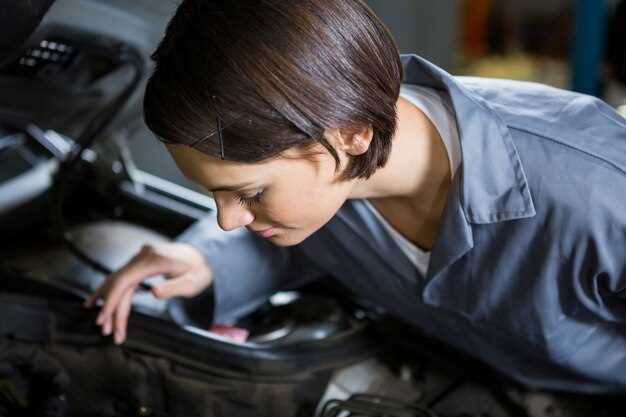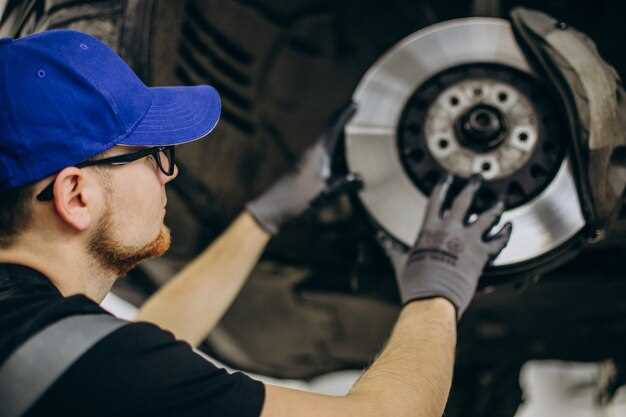How to Properly Bleed Your Brakes


Ensuring the safety of your vehicle starts with the brakes. One of the critical maintenance tasks that every car owner should consider is properly bleeding the brakes. This essential process removes trapped air from the brake lines, which can significantly compromise the braking system’s efficacy. Inadequate brake performance can lead to an increase in stopping distances and, ultimately, might jeopardize your safety on the road.
Many drivers overlook the importance of maintaining hydraulic systems in their vehicles, assuming that brakes work seamlessly without intervention. However, as air bubbles infiltrate the brake fluid, the pressure necessary for effective braking diminishes. Understanding the steps involved in bleeding your brakes can empower you to take action to ensure your vehicle remains safe and reliable.
In this guide, we will walk you through the necessary steps to properly bleed your brakes, equipping you with the knowledge needed to maintain your vehicle effectively. From gathering essential tools to understanding the bleeding process, this article aims to provide a comprehensive overview tailored for both novice and experienced car enthusiasts alike.
Gather Necessary Tools and Materials for Brake Bleeding
Before starting the brake bleeding process, it is essential to gather all the necessary tools and materials to ensure a smooth and effective procedure. Below is a comprehensive list of items you will need:
- Brake Bleeder Kit: This typically includes a vacuum pump and various tubing to help remove air from the brake lines efficiently.
- Brake Fluid: Always use the manufacturer-recommended brake fluid type, which could be DOT 3, DOT 4, or DOT 5.1, depending on your vehicle’s requirements.
- Wrenches: A set of open-end or flare wrenches will be necessary to loosen and tighten the bleed screws on the brake calipers.
- Plastic Tubing: Clear tubing that fits over the bleed screw is crucial for allowing old fluid and air to escape into a container without spilling.
- Catch Container: A clean container to catch the old brake fluid while you bleed the brakes is important to avoid mess and environmental hazards.
- Rags or Towels: Keep several rags or towels handy to clean up any spills and wipe any excess fluid from surfaces.
- Jack and Jack Stands: Properly lifting the vehicle using a jack and securing it with jack stands will provide safe access to the brake components.
- Safety Glasses: Protect your eyes from brake fluid, which can be harmful, by wearing safety glasses during the entire process.
- Gloves: Use disposable gloves to protect your skin from brake fluid and maintain cleanliness while working.
Having these tools and materials prepared in advance will help streamline the brake bleeding process, ensuring that it is carried out safely and effectively.
Identify the Right Brake Bleeding Method for Your Vehicle
Determining the correct brake bleeding method for your vehicle is crucial for ensuring optimal brake system performance and safety. Different vehicles may require distinct approaches due to variations in brake designs, configurations, and hydraulic systems. It’s essential to identify the suitable method based on your vehicle’s make, model, and brake system characteristics.
Here are the common brake bleeding methods classified by the type of brake system:
| Brake System Type | Recommended Bleeding Method | Description |
|---|---|---|
| Conventional Hydraulic Brakes | Gravity Bleeding | This method involves loosening the bleeder valve to allow brake fluid to flow out by gravity. It is simple and effective for systems without ABS. |
| ABS (Anti-lock Braking System) | Pressure Bleeding | This approach uses a pressure bleeder to force fluid through the system, which helps remove air trapped in the ABS module. |
| Performance Vehicles | Vacuum Bleeding | Using a vacuum pump, this method creates a negative pressure to draw fluid and air from the brake lines effectively. |
| Disc Brake Systems | Two-Person Method | One person pumps the brake pedal while the other opens and closes the bleeder valve, ensuring consistent fluid flow and air removal. |
| Drum Brake Systems | Manual Bleeding | This technique involves a similar approach to the two-person method but may require adjustment of the brake shoes for optimal performance. |
Always refer to your vehicle’s service manual for specifications regarding brake bleeding procedures, as some models may have unique requirements. Additionally, having the correct tools and brake fluid type is essential for effective and safe bleeding.
Prepare the Brake System Before Starting the Bleeding Process
Before initiating the brake bleeding process, it is crucial to adequately prepare the brake system to ensure both safety and effectiveness. Start by gathering the necessary tools and materials: a brake bleeder kit, a wrench or socket set, a clean container to catch old brake fluid, and fresh brake fluid compatible with your vehicle.
Next, ensure that the vehicle is parked on a flat, stable surface and engage the parking brake to prevent any movement. It’s also advisable to wear gloves and eye protection, as brake fluid can be corrosive.
Once the vehicle is secure, inspect the brake fluid reservoir. Make sure the reservoir is filled to the recommended level with fresh brake fluid. If the fluid appears dark or contaminated, it is best to replace it entirely to maintain optimal braking performance.
Identify the brake lines and locate the bleeder valves on each brake caliper or wheel cylinder. These valves are typically located at the highest point of the braking assembly, making them easily accessible for the bleeding process.
Prior to starting, ask an assistant to help you during the bleeding process. Communication is vital to ensure that the brake pedal is operated consistently while you work on the bleeder valves. Together, you will create an effective team to achieve a successful bleed.
Finally, review your vehicle’s service manual for any specific instructions or recommendations related to the brake system. This preparation will help mitigate any unexpected challenges during the bleeding process and enhance overall efficiency.
Execute the Brake Bleeding Procedure Step-by-Step
To ensure optimal braking performance and safety, follow these precise steps to bleed your brake system efficiently.
-
Gather Necessary Tools and Materials:
- Brake fluid (consult your vehicle manual for the correct type)
- Brake bleeder kit or clear tube
- Wrench (for brake bleeder screws)
- Container to catch old brake fluid
- Safety glasses and gloves
-
Prepare the Vehicle:
- Park the vehicle on a flat surface.
- Engage the parking brake.
- Remove the wheel if necessary for access.
-
Locate the Brake Bleeder Valve:
- Identify the bleeder screw on each brake caliper or wheel cylinder.
- Start with the wheel furthest from the master cylinder (typically the rear passenger side).
-
Attach the Bleeder Kit:
- Connect the clear tube to the bleeder screw.
- Place the other end into the container to catch fluid.
-
Bleed the Brakes:
- Ask an assistant to press the brake pedal several times.
- While the pedal is depressed, open the bleeder screw with the wrench.
- Watch for fluid and air bubbles in the tube.
- Close the bleeder screw before your assistant releases the brake pedal.
- Repeat this process until no air bubbles are visible in the fluid.
-
Check Brake Fluid Level:
- Monitor the master cylinder’s fluid level during the process.
- Top off with new brake fluid as necessary to prevent air from entering the system.
-
Repeat for Each Brake:
- Proceed to the next brake, following the same steps.
- Continue in the order: rear passenger, rear driver, front passenger, front driver.
-
Final Checks:
- Ensure all bleeder screws are tight to prevent leaks.
- Reinstall the wheel if it was removed.
- Test the brake pedal feel by pressing it several times before driving.
By following these steps, you will ensure that your brake system is free of air and functioning optimally for your safety.
Check for Air Bubbles and Brake Fluid Levels After Bleeding

After completing the brake bleeding process, it is crucial to check for any remaining air bubbles and ensure that the brake fluid levels are optimal. Air bubbles in the brake lines can significantly reduce braking efficiency and may lead to brake failure.
To check for air bubbles, visually inspect the brake fluid reservoir while someone gently presses the brake pedal. Observe the fluid flow; if small bubbles are present, re-bleeding may be necessary to remove them completely. Additionally, you can open the bleed screw on each brake caliper one at a time while having someone pump the brakes. This process allows any trapped air to escape, ensuring that the brake lines are free of bubbles.
After confirming that no air bubbles are present, check the brake fluid levels in the reservoir. Ensure that the fluid level is within the recommended range marked on the reservoir. Low brake fluid levels can indicate a leak or an issue within the braking system. If the level is low, top it up with the appropriate type of brake fluid as specified by your vehicle’s manufacturer.
Always remember to seal the brake fluid reservoir tightly after checking and refilling, as exposure to air can cause moisture absorption, leading to brake fluid degradation. Conducting these checks helps maintain optimal brake performance and ensures your safety on the road.
Test Your Brakes for Proper Functionality Post-Bleeding
After successfully bleeding your brakes, it is crucial to test them to ensure that they function correctly and safely. This process helps verify that there are no air pockets remaining in the brake system and that the brake fluid is at the appropriate level.
Start by ensuring that your vehicle is on a flat surface and that the gear is in ‘Park’ or ‘Neutral’ with the handbrake engaged. Before driving, press the brake pedal firmly several times. The pedal should feel solid and responsive. If the pedal feels spongy or sinks to the floor, this could indicate trapped air or a need for further bleeding.
Next, take your vehicle for a short test drive in a safe area. Start at a low speed and gradually increase your pace. Test the brakes at various speeds, ensuring that they engage smoothly without any unusual noises or vibrations. Listen for any signs of grinding or squeaking, which could suggest issues with the brake pads or rotors.
Pay attention to the braking distance. If the brakes do not respond as expected or if you notice an extended stopping distance, stop immediately and inspect the brake system. It’s essential to perform checks on both front and rear brakes, as issues may differ between these systems.
Finally, double-check the brake fluid level in the master cylinder reservoir. Ensure it is within the recommended range. If you find any signs of leakage or if the fluid level drops significantly after your test, further investigation may be necessary to prevent potential brake failure.
